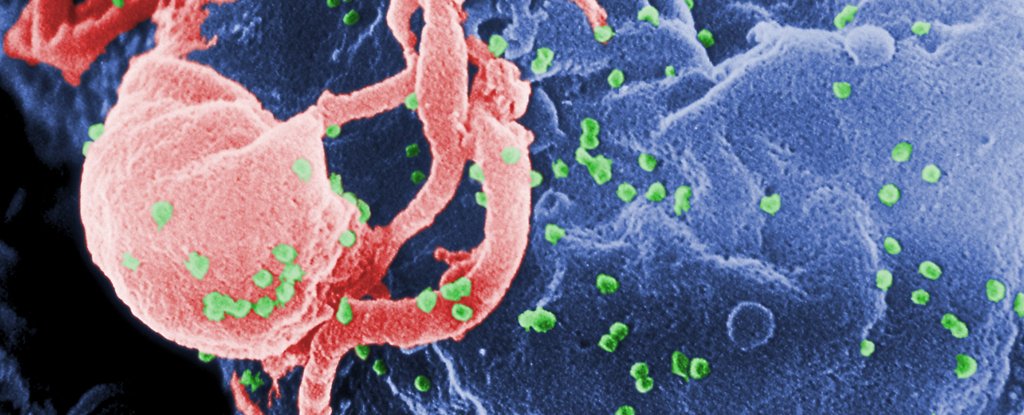Source:sciencealert.com
Human Immunodeficiency Virus (HIV) is an RNA-based infection responsible for a chronic and potentially life-threatening condition called acquired immunodeficiency syndrome, or AIDS.
In humans, the virus works by infecting and destroying a type of white blood cell called a helper T cell (or T lymphocyte). This interferes with a person’s immune system, decreasing their ability to fight infection while increasing their risk of developing cancer. What’s more, the destruction of these lymphocytes can directly affect the body by causing swelling and tissue damage.
The virus itself is rather fragile and easily broken down by oxygen and sunlight, limiting its spread to direct transmission, often through invasive contact with infected fluids. This means most people who are HIV positive acquired the virus when particles directly entered their own blood stream through broken skin, such as during via sexual intercourse or contaminated medical instruments.
All in all, there are two versions of this virus, referred to as HIV-1 and HIV-2. While similar in structure and makeup, HIV-1 is behind 95 percent of cases, with HIV-2 mostly found among West African demographics.
According to the World Health Organisation, roughly 75 million individuals have been infected since the first recorded cases. Half of those have since passed away as a result, though mortality has been decreasing since 2006 thanks to improved treatments prolonging lives.
Can HIV be cured?
HIV’s fragility also makes it susceptible to high mutation rates. This means that upon infection, replicating virus particles quickly develop into a variety of strains, which the immune system struggles to keep track of.
Associated with drug use and sexuality in the early 1980s, authorities were slow to invest in research and medications. Today a variety of pharmaceuticals impede the virus’s ability to replicate and infect new cells. While there isn’t as yet a cure, antiviral pills have been found to protect the vast majority of patients and make it possible for those infected to reduce the number of viral particles in their body to the point of no detection.
Multiple recent studies have shown that in these cases, HIV transmission through sex is effectively zero, and as a result, many patients today can live long, healthy and sexually-fulfilling lives.
Where did HIV come from?
The virus and AIDS came to public attention in the 1980s, though given hindsight and examination of medical records and tissue cultures, examples of the infection have been found as far back as the 1950s.
Similarities between HIV and retroviruses found in chimpanzees suggest a jump between species occurred some time in recent history, most likely as the result of resorting to the consumption of chimps as bushmeat.
